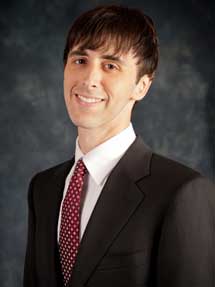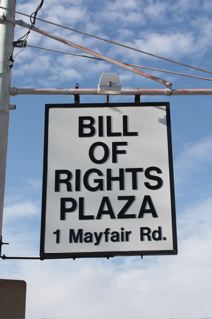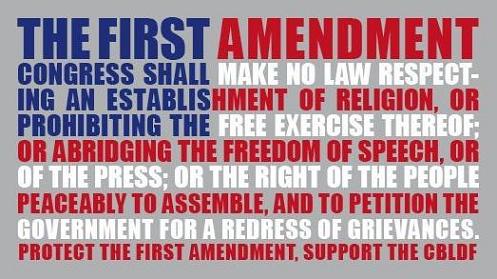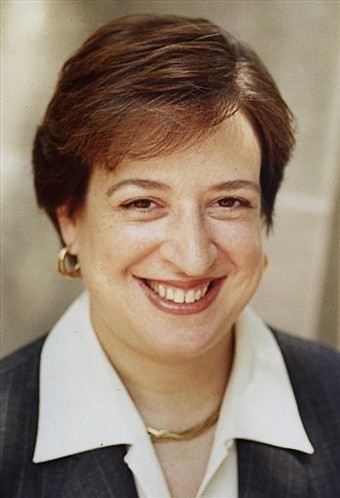I’ve been sued. I’m 51 years old and this is a first for me, both personally and professionally.
And it flows from a post I wrote last month about the depths to which some attorneys will sink in their marketing, that also happened to mention that Joseph Rakofsky was incompetent as a lawyer. Also, that he had an ethical issue regarding an email he sent to an investigator asking him to “trick” a witness. He sued me for defamation.
First the background on how the suit came to be, in case you haven’t already read one of the gazillion other stories about it; I’d only dealt with it briefly before. I’ll also discuss how I’ve dealt with four past legal threats I’ve received. And finally, I’ll tell give you my response to being sued.
Pull up a chair. The story is good. Unless, of course, you are Rakofsky. Or his lawyer, Richard Borzouye.
Background of the murder trial and lawsuit
The basis of my initial comments was an article in the Washington Post regarding a criminal trial Rakofsky defended. And the Post had, in turn, quoted the presiding judge among its sources. The Post told the tale of the 33-year-old Rakofsky, a 2009 law school graduate admitted to practice in New Jersey, taking on his first-ever trial. A murder defense. In Washington D.C. Where he’s not even admitted to practice. (see: D.C. Superior Court judge declares mistrial over attorney’s competence in murder case)
So Rakofsky hired local counsel to help him, and get him admitted to practice in D.C. for the purpose of this one case. Nothing wrong with that part if, of course, he could properly handle such a case. Which the presiding judge said he couldn’t, with the Post reporting that the judge was “astonished” at Rakofsky’s performance and his “not having a good grasp of legal procedures.” Also, that his performance in the trial was “below what any reasonable person would expect in a murder trial.” And that “there was not a good grasp of legal procedures of what was, and was not, allowed to be admitted in trial, to the detriment of [the defendant].”
And the Post also reported that Rakofsky’s own co-counsel, that he hired to help him, said, “He was the attorney of record. I would offer what I thought was the best advice, and he wouldn’t accept it.”
And then there was the part about trying to “trick” a witness. According to the Post:
The filing included an e-mail that the investigator said was from Rakofsky, saying: “Thank you for your help. Please trick the old lady to say that she did not see the shooting or provide information to the lawyers about the shooting.” The e-mail came from Rakofsky’s e-mail account, which is registered to Rakofsky Law Firm in Freehold, N.J.
A mistrial followed, the story was published, and the legal blogosphere lit up with commentary, much of which dealt with his website and marketing where he pretended to have vast experience, when in reality he had little. Much of that experience that he boasted about, it seems, came from being an intern, not a lawyer. Bloggers wrote about his incompetence and ethics problem, much of it in gory detail with full orchestration and 5-part harmony.
As a lawyer, he was still in his puppyhood, though you wouldn’t know if from the experience he described on his website.** On the Internet, nobody knows you’re a dog.
Still with me here? Because this is where it gets really bizarre.
Did Rakofsky go to lick his wounds and repair the damage he had done to his own reputation? No, he did not. Did he send emails or make calls to those bloggers he believed got the story wrong in order to give his version of the events? No, he did not.
Instead, he sued. Everybody. This included the Washington Post, The American Bar Association, and Thomson Reuters. Scott Greenfield (one of my co-defendants) instantly dubbed the suit Rakofsky v. Internet. The Complaint is here. Mark Bennett (another co-defendant) has a compendium of posts on the subject, so I won’t give much more background.
Then, after getting ripped to shreds based on the frivolousness of the suit –after all, the bloggers he had sued were relying on a Post story quoting a judge — he amended his Complaint to sue even more. When you only own a shovel, I suppose, you only know how to dig.
With the story in the news, one of the jurors appeared to reinforce what everyone was saying. Except worse. He wrote:
It was obvious from the opening statements that Mr Rakofsky was way out of his league and poorly trained for a proper court defense. Whatever momentary empathy any of us on the jury may have felt for Mr Rakofsky’s absolute ineptitude, were quickly absolved by our knowledge that a young man’s entire life was at stake. The absolute amateurish antics displayed by Mr Rakofsky were repulsive and oddly narcissistic. He had very little command of the law, and now hearing that Mr Deaner’s family actually hired him is truly upsetting. Most of us assumed that this was a court ordered public defender that may just have been too young and overwhelmed by a huge docket of cases to put together a proper defence. (More ugly comments from the juror about Rakofsky here.)
And so, buried deep on page 53 (paragraph 165 of the original Complaint and paragraph 172 of the Amended version if you are hunting this down), Rakofsky makes a claim against me, for writing thusly:
Ethics also comes into play with deception, as evidenced by one Joseph Rakofsky, a New York lawyer with scant experience, but whose website sung his praises in oh so many ways. Then he got a real client. Defending a murder case. Which of course, he was utterly incompetent to do…
(Where I will be in all the future amended Complaints is, of course, a mystery, as people continue to write and ridicule, and he will presumably spend all of his waking hours amending and re-amending until he gets carpal tunnel syndrome.)
Rakofsky claims in the part of the suit pertaining to me, that “”Rakofsky was never declared ‘incompetent’,” as I had written. But he is wrong. He was declared incompetent. By me. And, of course, by many, many others. (Post headline read: D.C. Superior Court judge declares mistrial over attorney’s competence in murder case.)
Having given the basic outline of the story, I now turn to the part where I give my opinions. So let me go on to say that: In addition to being incompetent, I also think, based on the comments of the presiding judge, his co-counsel and the juror that spoke up, that he is unskillful, incapable, inept, unqualified, untrained, unprofessional, and clumsy. This is in addition to being a bumbler, blockhead, dolt, dingbat and chucklehead for having brought this suit, guaranteed to rain much unhappiness unto his name. I’ve got a thesaurus and I’m not afraid to use it.
But a Complaint in a lawsuit demands an Answer. That is a document that we lawyers file in the big white building with the fancy columns downtown. As it happens, that’s my home turf. I tried my first case there back around 1986, and I last appeared there this morning.
But hey, I got a blog too, so why not give a little explanation for why I will Answer the way I will?
How I’ve handled past legal threats:
I’ve been threatened with legal actions at least four times that I can remember. The first came from Avis, where one of their associate general counsel’s told me to cease and desist using the Avis logo to decorate my blog for a post regarding immunity for rental car companies. I had great fun with that, engaged the intellectual property bloggers to crowdsource legal opinions, and then told Avis to go stuff it.
The second one also came from a General Counsel, also from a large company displeased at my using one of their images to decorate a post about the company. She called me. I suggested she send a letter to me setting forth her position why it wasn’t “fair use.” She never sent the letter. Smart move.
A third one came from someone unhappy that I linked to her. Go figure. My spam folder is filled with solicitations asking for links. While the post was a simple nuts-and-bolts practice tip about intake questionnaires — and possibly the most boring post I ever put up on my site, so please forgive me for even linking to it — I nevertheless told her also that I wouldn’t take it down. Then she changed the text of the post I had linked to, making the link irrelevant, and I had to kill the link. But the post stayed up in all its awfulness.
A fourth dealt with the issue of insurance fraud, and a company that provides so-called “independent” doctors for defense medical exams, except that a doctor on the witness stand was caught with written instructions directing him to omit opinions from the “independent” report if they were favorable to the plaintiff. I heard about it through the grapevine and put on my journalist hat to see if I could find out who did this slimy thing. I tracked the company website to a doctor’s home address and published it. Then I got a call from a screaming lawyer (the doctor’s son) because I had put his father’s home address on the web, and moreover he told me, his father had nothing to do with the company. I hung up on him as he was threatening to haul me in front of a judge. Then he called back, having cooled his heels a bit, and ‘fessed up that he was actually the owner of the company with the slimy instruction letter. So, because I now had additional (and much better) information, that being his admission to being the company owner, I edited the post to bring it up to date (and explained why).
My Answer to Rakofsky:
Now we are here. An actual lawsuit against me. You probably have the idea by now that I don’t suffer fools too gladly. And that posture doesn’t change today.
One of the demands Rakofsky made is that the defendants not mention his name. Or use his picture. Which is truly bizarre. He seems desperate to scrub the Internet of his follies.
I am tempted to write, in response to the suit, “Go shit in a hat and pull it down over your ears.” But that doesn’t sound very lawyerly. So I’ll say it in Latin. Vado shit in a hat quod traho is down super vestri ears.*
OK, maybe I used a translating website for that. You don’t really think I write Latin, do you? I suppose, for future reference, we can just call it the GSIAH defense. Or VSIAH if you like the pseudo-Latin that came out of the translator and you want to wow your friends with your knowledge of the Internet’s hottest new acronym.
Yeah, I digressed. But that was worth it, no?
What was Rakofsky thinking? That a bunch of lawyers that make their living in the well of the courtroom, accustomed to walking a high-wire without a net as we cross-examine hostile witnesses, would somehow cower in fear at an utterly frivolous lawsuit? Did he think that those of us that write blogs, for all to see, might not somehow have a basic grasp of the First Amendment? Didn’t he know, well before he even went to law school, that people have a right to set forth their opinions? How could he survive law school and pass a bar exam without knowing constitutional fundamentals? Perhaps the better question, why wasn’t he thinking of what would happen in response to such a suit? Was he a spoiled child that got everything he wanted simply by throwing a tantrum?
And those of us that are practicing lawyers are the small fries, compared with our co-defendants Washington Post, American Bar Association and Thompson Reuters. Like they are going to roll over and pull down their articles? Good grief.
Rakofsky’s choices at this point seem limited. But certainly, the first thing he ought to do is put away the damn shovel as he is burying himself with it.
Yeah, there’s more to come.
*Update: I’ve been told by Luigi de Guzman that the proper translation, or as proper as possible, is vade et caca in pilleum et ipse traheatur super aures tuos (go shit in a [knit] hat & let that same hat itself be pulled over your ears).
Update #2: This post has generated some unusually heavy traffic, so here is my official Welcome to all you new readers getting ready to head out the door…
**Addendum (5/26/11) – While Rakofsky apparently took down most of his websites/marketing as of this writing, at least one of them has been preserved at this link as an example of misleading attorney marketing for a lawyer just starting out. I have used a photo from that source. The picture serves as a contrast to the older, gray haired gentlemen — who apparently have no relation to Rakofsky’s firm — that also were used on the Rakofsky site.
Update #3 (5/31/11): The Rakofsky Defamation Case (And Why I Won’t Be Posting Much)




